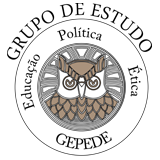

Resumo: Busco, através desse ensaio, percorrer certas imagens representativas para compreender o que significa a experiência do pensar. Minha referência principal diz respeito às reflexões de Hannah Arendt, tanto suas descrições daquilo que aparece, quanto do sentido que acompanha as aparências. O pensar é compreendido sobretudo como uma atividade: a vida do espírito não é passiva, não se reduz à contemplação, bem como não desponta do nada, independente do mundo. No entanto, nossa situação condiciona em certos aspectos o nosso pensamento, embora caiba a cada um de nós o realizarmos: movemo-nos e pensamos relativamente a um mundo, ainda que desejemos por vezes escapar-lhe. Há uma moldura que circunda maleavelmente nossa atividade intangível, seja impondo-lhe limites, seja os expandindo. Este texto é uma experiência de pensamento em que caminho junto a Arendt, mas em nosso mundo atual.
Palavras-chave: Pensamento. Experiência. Moldura. Caminhos. Hannah Arendt.
Abstract: Through this essay, I search for some images that may represent the experience of thinking. My major reference is Hannah Arendt’s reflections: on one hand, her descriptions about what appears, and on the other, the meaning that follows the appearances. The thought is understanded mainly as an activity: the life of the mind is not passive, it cannot be reduced to contemplation, nor emerge from nowhere, regardless of the world. However, our situation conditions our thinking in certain aspects, although each one of us must perform it: we think and move ourselves regarding the world, even though sometimes we desire to escape it. There is a framework that malleably surrounds our intangible activity, whether imposing limits or expanding them. This text is a experience of thought in which I walk with Arendt, but in our current world.
Keywords: Thought. Experience. Framework. Pathways. Hannah Arendt.